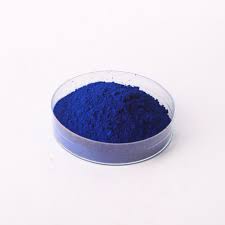indigo dye factories
The Legacy and Impact of Indigo Dye Factories
Indigo dye, renowned for its deep blue hue, has a storied history that reaches back thousands of years. The widespread use of indigo dye can be traced to ancient Egypt, where it was used to color garments and textiles. However, it was during the 18th and 19th centuries that the indigo dye industry flourished, particularly with the establishment of indigo dye factories. These factories not only transformed the textile industry but also influenced social, economic, and cultural landscapes across various regions.
Indigo dye is derived from the leaves of the indigo plant, specifically *Indigofera tinctoria*. The extraction process requires fermenting the leaves, a method that requires both skill and painstaking labor. In various parts of the world—such as India, Africa, and the Americas—indigo dyeing became an essential part of the culture and economy. Factories that produced indigo dye arose in response to the burgeoning demand for this coveted color, particularly in Europe, where indigo was used to dye cotton fabrics.
During the colonial era, indigo became a significant cash crop in places like India, where British colonialists established indigo plantations. The introduction of indigo factories in colonial territories created a lucrative business for colonial powers, at great cost to local farmers. The British incentivized farmers to cultivate indigo instead of food crops, leading to widespread economic hardship and social unrest. The complexities surrounding indigo farming culminated in the Indigo Rebellion of 1859 in Bengal, India, where farmers protested oppressive practices, highlighting the harsh realities of colonial exploitation.
However, the shift towards synthetic dyes in the late 19th century began to overshadow traditional indigo production. Chemical advancements allowed for the creation of synthetic indigo, which was not only more cost-effective but also easier to produce in large quantities. The rise of these synthetic alternatives led to the decline of many indigo dye factories, particularly in regions that relied heavily on natural indigo dye production.
indigo dye factories

Despite the decline, there has been a resurgence of interest in natural dyes, including indigo, in recent years. There is a growing appreciation for artisanal craftsmanship, sustainable practices, and the uniqueness of naturally dyed textiles. Traditional techniques are being revived, and some former indigo factories are being repurposed or returned to their original forms. Artisans and designers are increasingly turning to indigo to produce high-quality, eco-friendly fabrics that resonate with consumers who value sustainability and cultural heritage.
The journey of indigo dye factories reflects broader themes of economic development, colonialism, and the evolving landscape of textile production. As industries adapt to changing consumer preferences and technological advancements, the significance of historical practices, such as indigo dyeing, remains relevant.
From a cultural standpoint, indigo dye has played a significant role in various societies. In Japan, for example, indigo dyeing is deeply rooted in the tradition of *aizome*, where artisans skillfully create mesmerizing patterns and designs using traditional methods. This craftsmanship not only produces beautiful textiles but also embodies a connection to culture and heritage, enhancing the appreciation for the art form.
In today’s global marketplace, the revival of interest in indigo reflects a desire to reconnect with heritage, sustainability, and artisanal quality. Consumers are increasingly seeking products that tell a story, and indigo-dyed textiles offer a narrative that encompasses thousands of years of history.
In conclusion, indigo dye factories have played a significant role in the history of textile production, influencing economic practices and cultural evolution. While they faced challenges due to synthetic alternatives and colonial exploitation, the resurgence of interest in indigo presents an opportunity to honor traditional methods and promote sustainability. Today, as artisans embrace and adapt these age-old techniques, the legacy of indigo dye continues to shape contemporary textile practices, ensuring that this rich history remains alive in the fabric of modern society.
-
Sulphur Black Dyes in Daily Use
NewsMay.07,2025
-
Indigo Dyeing for Daily Life
NewsMay.07,2025
-
Indigo Dye Production and Its Growing Demand
NewsMay.07,2025
-
Color That Lasts
NewsMay.07,2025
-
Bromo Indigo for Modern Use
NewsMay.07,2025
-
Blue From Nature
NewsMay.07,2025
-
The Timeless Color in Fashion and Textiles
NewsApr.10,2025

Sulphur Black
1.Name: sulphur black; Sulfur Black; Sulphur Black 1;
2.Structure formula:
3.Molecule formula: C6H4N2O5
4.CAS No.: 1326-82-5
5.HS code: 32041911
6.Product specification:Appearance:black phosphorus flakes; black liquid

Bromo Indigo; Vat Bromo-Indigo; C.I.Vat Blue 5
1.Name: Bromo indigo; Vat bromo-indigo; C.I.Vat blue 5;
2.Structure formula:
3.Molecule formula: C16H6Br4N2O2
4.CAS No.: 2475-31-2
5.HS code: 3204151000 6.Major usage and instruction: Be mainly used to dye cotton fabrics.

Indigo Blue Vat Blue
1.Name: indigo blue,vat blue 1,
2.Structure formula:
3.Molecule formula: C16H10N2O2
4.. CAS No.: 482-89-3
5.Molecule weight: 262.62
6.HS code: 3204151000
7.Major usage and instruction: Be mainly used to dye cotton fabrics.

